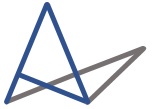Operational Technology (OT) is the electronic and computing equipment used for the Real-Time protection, operation and management of the assets, infrastructure and networks. It is characterised by its mission and business critical use, industrial digital electronic technologies and computing nature, installation practices and technical skillsets.
Operational Technology includes:
- Real-Time Systems (RTS) including computing hardware such as servers, storage, firewalls and peripherals, operating systems, databases, middleware, software applications and associated data cabling, racks, licenses and configurations. Real-Time software applications include the Distribution Management System (DMS), Outage Management System (OMS), Energy Management System (EMS), Communications Network Management System (CNMS), Plant Information (PI) data historian and Market Management System (MMS)
- Supervisory Control and Data Acquisition (SCADA, also known as automation, process control, instrumentation, control systems) systems including Front End Processors (FEP), Remote Terminal Units (RTU), Programmable Logic Controller (PLC), hardwired Input-Output (I/O) collection, Human-Machine Interface (HMI), Front-End Processors (FEP), terminal servers, manufacturer specific controllers and associated transducers, small wiring, embedded software, firmware and configuration
- Digital protection and control equipment including all digital and numeric relays, controllers and associated transducers, small wiring, firmware and configuration
- Digital metering, instrumentation and monitoring equipment and associated transducers, small wiring, firmware and configuration
- Telecommunications and networking including all:
- Electronics (active and passive) such as Radio transceivers, receivers, transmitters, multiplexors, switches, routers, modems, handsets, firewalls, rectifiers and associated small wiring, cabling, firmware and configuration
- Physical infrastructure including telecommunications structures (towers, masts, monopoles, lightning protection, Earthing and antennas), Power Line Carrier (PLC) line traps, self-contained mounting (shelters, racks, kiosks), optic fibre (fibre, conduit and pits), data cabling (copper pilot and coaxial cables)
- Associated contracts for frequency spectrum licensing, co-site sharing, dark fibre leases and utility data carrier services
- Configuration, testing and troubleshooting equipment and tools including Personal Computers (PC), spectrum analysers, oscilloscopes, multimeters, Optical Time-Domain Reflectometer (OTDR), application or manufacturer specific test and simulation equipment and associated software, firmware and configuration
Operational Technology does not include:
- Near Real-Time Systems including computing environments, software applications and associated licenses and configurations. Near Real-Time applications including the corporate Geographic Information System (GIS) and Mobile Workforce Management (MWM)
- Corporate Information Technology (IT) systems including computing hardware such as servers, storage, firewalls and peripherals and operating systems (OS), databases, middleware, software applications with associated data cabling, racks, licenses and configurations. Corporate IT applications include the Enterprise Resource Planner (ERP) or Asset Management System (AMS), Meter Business System (MBS), Customer Relationship Management (CRM)
- Power electronics[1] including:
- Power electronic control systems including Static Synchronous Compensators (STATCOM) and Rapid Earth Fault Current Limiters (REFCL)
- Electro-mechanical protection systems including electro-mechanical relays, Metering, Current Transformers (CT), Voltage Transformers (VT) and Circuit Breakers (CB) and associated transducers, small wiring, test equipment and configuration
- Electro-mechanical instrumentation and control systems including High-Tension mimic panels and analogue meters
- Direct Current (DC) systems (Uninterrupted Power Supplies, chargers and batteries)
- Alternating Current (AC) power systems (Generators, Transmission and Distribution networks)
- Environmental management systems including security systems, air-conditioning, weather stations and fire alarm systems
- Land, property and physical security such as buildings, fences, gates, access roads and land leases
[1] In other industries power electronics and energy storage systems could be considered OT, however for a Distribution System Operators’ (DSO) area of expertise it is considered as Transmission and/or Distribution infrastructure
